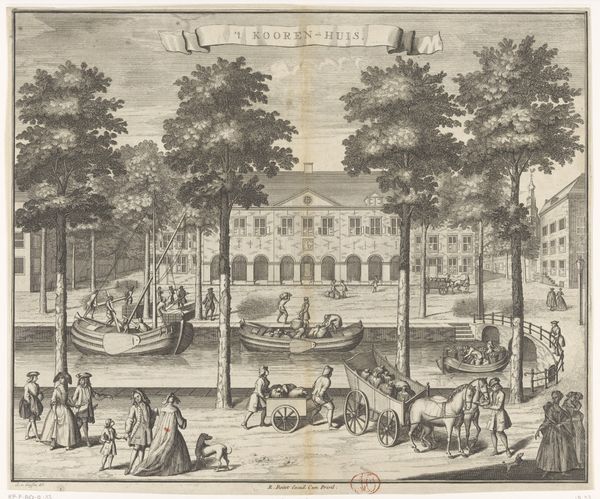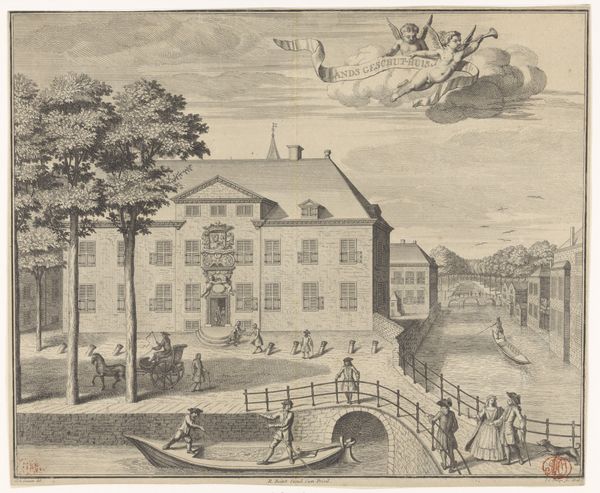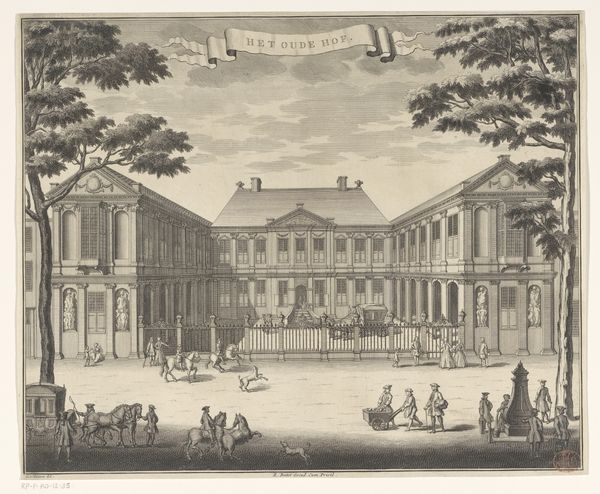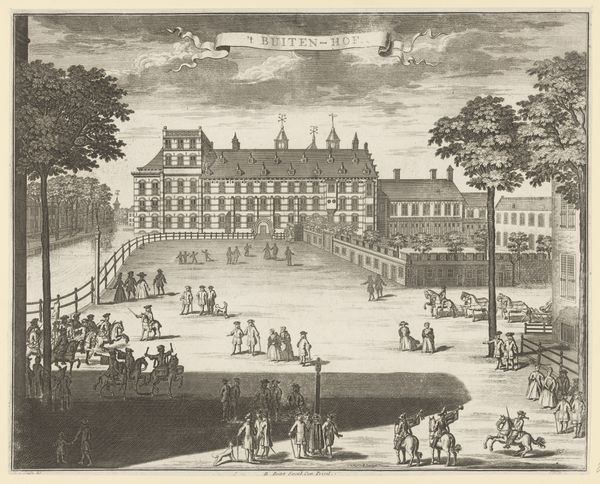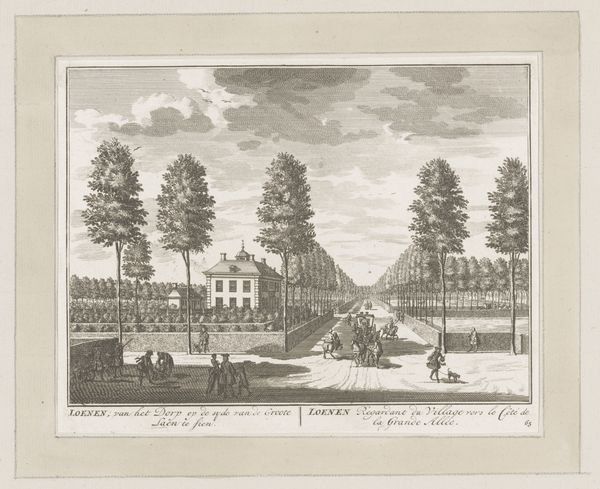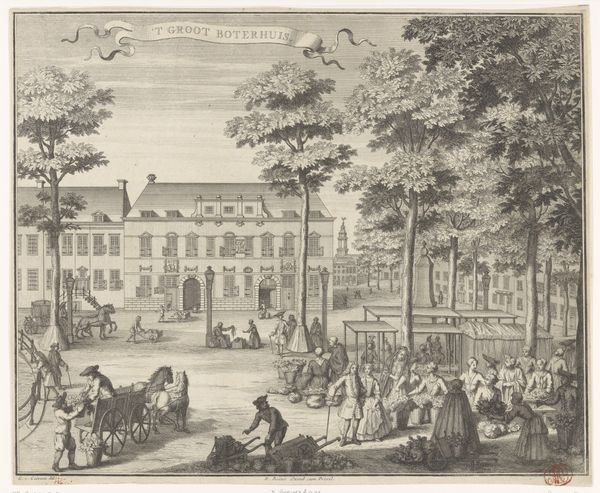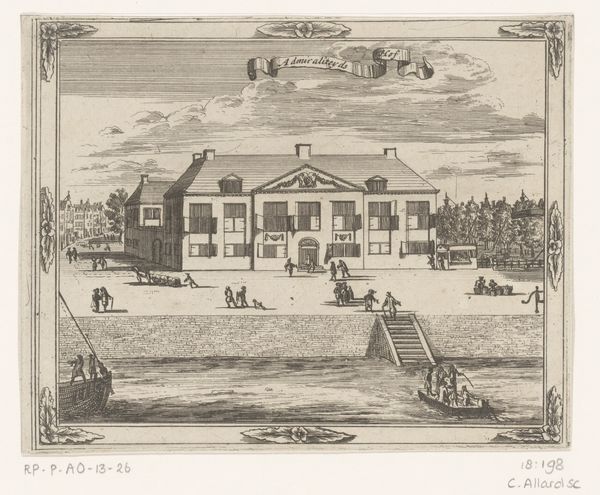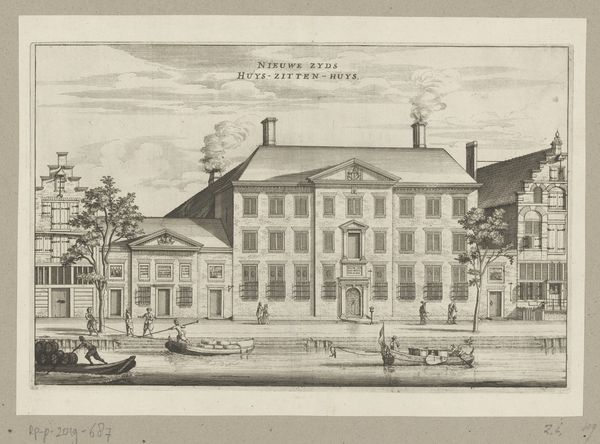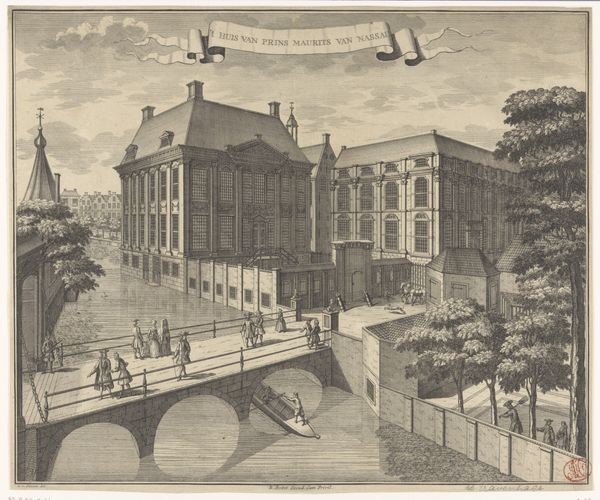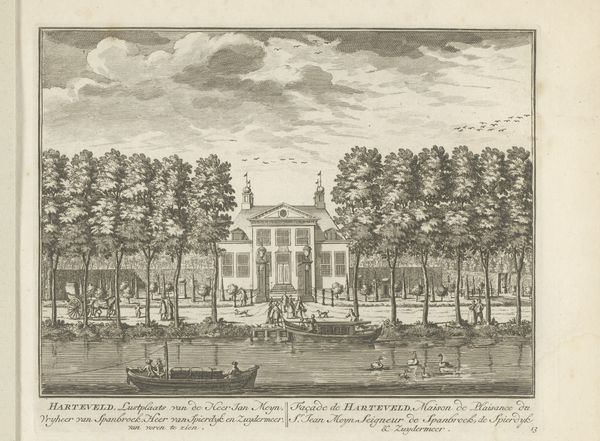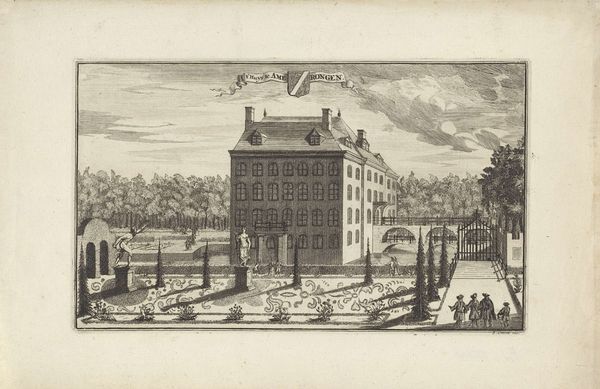
print, engraving
#
aged paper
#
baroque
# print
#
old engraving style
#
cityscape
#
engraving
Dimensions: height 286 mm, width 344 mm
Copyright: Rijks Museum: Open Domain
Editor: This is an engraving from between 1730 and 1736, titled "Gezicht op het Tuchthuis te Den Haag" - or "View of the Penitentiary in The Hague". It gives a strong sense of order and… well, almost chilling tidiness. What social dynamics might have shaped this scene? Curator: That “chilling tidiness” you observed is key. We need to consider what a ‘penitentiary’ meant in the 18th century. It wasn't just about punishment, but about reforming behavior. What kind of behavior do you think society was trying to correct at that time? Who was deemed to need correction? Editor: Presumably, those who transgressed social norms, perhaps the poor or those deemed "idle"? Is that reflected in the details presented here? Curator: Absolutely. Notice the imposing architecture. Consider how that architecture relates to the people in the foreground – seemingly ordinary citizens going about their day. Do you see a sense of power and control embedded in that relationship? Who is given visibility and agency within this cityscape, and who is marginalized or erased? Editor: I see the contrast now. The building dominates, a constant reminder. The regular citizens appear almost as if they’re performing their roles for the state, under its watchful eye. Does the title “Spin house,” at the top, reinforce that this place is for women and societal expectations on them? Curator: Exactly. The "Spin house," implying women are being taught to spin wool, is an explicitly gendered element that ties labor and moral correction together, reinforcing expectations on women’s roles in society. Editor: So, this engraving is not just a cityscape but a statement about power, class, gender, and control in 18th-century Dutch society? It reveals a desire for social order and discipline, even in everyday life. Curator: Precisely. By looking at this image through the lenses of gender, class, and social control, we move beyond a simple depiction of a building and access a rich commentary on the values and anxieties of the time. Editor: I see the engraving in a completely new light now; thank you for opening my eyes!
Comments
No comments
Be the first to comment and join the conversation on the ultimate creative platform.
